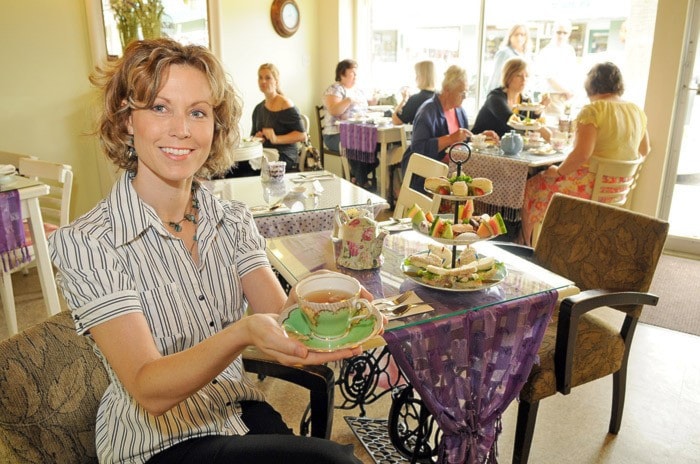Walking into Apeldoorn’s is like going back in time.
At least for most girls it is.
Back to a time when they wore frilly pink dresses and hosted decadent tea parties in their bedrooms, when only the best plastic teacups were brought out, and only their best stuffed bears and favourite Cabbage Patch dolls invited.

Except at Apeldoorn’s, the plastic tea cups have been replaced with real china and the stuffed bears with real friends.
At high noon, with not a table to spare, grandmas and teenagers, best friends and siblings, mothers and daughters chatted over scones and Devonshire cream, laughed over quarters of crustless sandwiches and sweet pickles, and gushed over three-tiered trays of thinly sliced melons and sinfully tasty treats. With the aromas of different-flavoured teas swimming from table to table, Amber Kurtz, with her long slender fingers, passed each guest a dainty, vintage-style teacup atop a matching saucer.
For Kurtz, owner of Apeldoorn’s Restaurant on Mill Street, the perfect tea party is about creating the perfect atmosphere.
With old sewing tables as eating tables, cotton doilies as napkins, and an out-in-the-open shelf full of floral, Victorian, and gold-trimmed teacups, she’s done just that.
“It’s about more than just the tea,” Kurtz said. “It’s about the experience.”
These days, more and more are seeking out that experience.
The tea culture in North America has boomed in the last few years. Industry projections for 2012 have tea sales at $15 billion up from $4.6 billion in 1999.

“The projections made as far as tea growth are phenomenal; it’s set to explode,” said Kim Self, co-owner of Aromatica Fine Teas on Young Road, who attended the World Tea Expo held in Las Vegas in June. “If you listen to industry marketers, you would think tea is set to become a fourth world religion. We think that’s a little aggressive.”
The recent movement is predominantly North American based. In Europe and Asia, the culture of tea has been embraced for centuries, going as far back as 2737 BC when a tea leaf accidentally dropped into Chinese emperor Shen Nong’s kettle of boiling water. After just one sip, the emperor declared the taste refreshing.
“So much of our tea culture was a mistake or accidental ... the story of tea is serendipitous really,” said Self.
Tea ceremonies have embodied Japanese, Chinese, German, British and other countries’ traditions. Next to water, tea is the most consumed liquid in the world. But in North America, it’s only just catching on.
With more people seeking out the health benefits of tea, its antioxidants and non-caffeinated options, and with a greater accessibility to finer blends, the culture in North America is only just beginning.
Long gone are the days of bagged orange pekoe, now the options are endless: black tea, green tea, white tea, rooibos tea, spicy tea, smoked tea, Indian tea, Nepalese tea, Darjeeling tea, considered the “champagne” of tea, and more.
“Tea is so much more than just a bag thrown in a cup,” said Self, who grew up in New Orleans where the only tea he knew was Lipton iced tea. It wasn’t until he immigrated to Canada in the 1970s that he sipped his first brew of loose-leafed tea in a Chilliwack farmhouse.
It was instant love, he said.
“I did not know tea could taste that good. The whole world opened up for me.”
And that, he said, is what tea is all about – memories.
kbartel@theprogress.com
twitter.com/schoolscribe33
